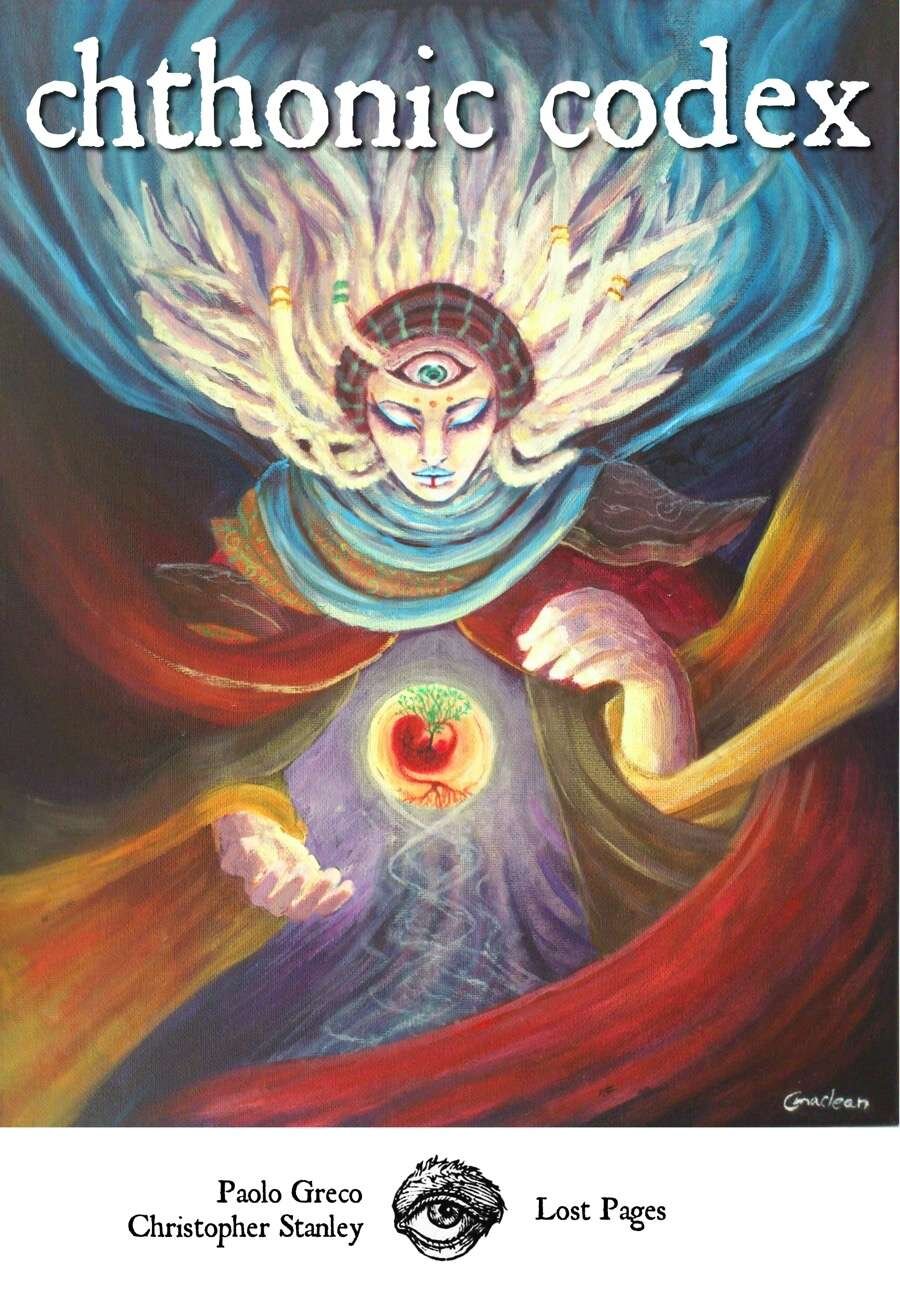A Review of Chthonic Codex

First, if you do not like weird components for your settings, this book is not for you. Chthonic Codex was written by the publisher of the Into the Odd blog and is brimming with it.
Chthonic Codex is a 192 page pdf and POD (I bought the latter several weeks ago). It has three parts: creatures, schools of magic and a miscellaneous collection of ideas for the setting of the Valley of Fire and the Hypogea (the underearth). The few places where it has game mechanics, it is in dual format, OSR and AFG. Unfortunately the latter is not described, nor is the monetary system used throughout. I have no idea what c or t means nor how they relate. It does not have a table of contents, but the index is fairly comprehensive.
Part one describes 30 monsters. Each has a piece of art and most have one page of description and statistics. A few examples include:
-Asphaltomorphs are magically infused, living globs or tar. Most could be turned into pets or drained for magic slots, but a few are much more powerful and dangerous to those who use magic near raw mana-tar.
- Bocklin are goat/human hybrids found in the Hypogea, they are the most common people.
- Cephalopods are shelled squid people (ammonites) that have advanced technology. They are the setting’s version of illithids or aboleth.
- Lecternomancers are undead, corpses twisted into lecterns and spellbooks. The latter allow the creatures to cast spells.
- Ornipooches are bird/dog hybrids that are fairly common pets. They can self-destructively heal others (i.e. they take damage while performing healing magic) and are usually slain in the process because they aren’t very tough.
- Pterochirons are two headed chickens with a human arm instead of legs. The description is more about the two drunk wizards who created Kellias, the first one.
Part two describes the Great Schools of Magic (plus a few others). These locations are found in the Hypogea, and thus underground where they can hide their secrets. There is the Circle of the Fire Dervishes, The College of the Gatekeepers, The College of the Chimerists, The College of the Stargazers and The School of Necromancy. There is a lot to this and the next section, so here is but a taste of what you can find in these pages:
- A new skill system
- Two methods of spell research. One is based on the skill system and is fairly mundane and the other has the caster go off into the Hypogea alone to meditate and study magical phenomenon. When they return, weeks later, they will have the spell they want and a potentially nasty side effect. I think the latter is one of the most awesome parts of the book.
- Charts and more charts. One is of useless objects apprentices are expected to own, including a pint of children’s tears, a coprolite of an extinct dragon species and fish barding (plus scores of others).
- Magical herbs and how overuse can be very bad.
- Having apprentices and how to use them.
- Making magic items.
- The school philosophies, class bonus features and spells.
- The other schools include the School of Artifice, the School of Pharmacy (which was partially wiped out in recent history), the magic of Hypogean Hermits, the School of Lies (i.e. illusions) and the spells of the Deep Garden. Most have 8-12 spells, but Pharmacy and the Deep Garden have less.
Part three is a wide collection of ideas for the setting, including:
- Adventure hooks for apprentices.
- Accomplishments, rewards for various actions. Some of these are required for spell casters to advance, but most are just fun things to earn by doing.
- Another spell research method. This one is much more complex than the other two (which were one and two pages long). This one relates to Mysteries, magical beings that grant knowledge if approached correctly. There are nine pages of charts plus another of text describing how to do this. I like this method as well as it lays everything out and is also very easy to modify as needed.
- Laws of Reality, two and a half pages of charts and what happens when the characters (player or other) do something. It can get very strange depending on what the GM rolls up. This is another high point for the book.
- The Apotheosis of the Grand Sorcerer. These are the people who lead all the schools and it takes four pages to describe the method of their ascension.
- Mapping and example locations of the Hypogea. No maps, just lots of ideas that can be mined for other settings as well.
- Encounter charts for creatures and magic items.
- Magic items and many types of scrolls.
- Devouring Idols are small statues that provide some benefits if they are fed. Any character can create any idol, but there are prices to pay.
- And finally a description of mana-tar and how characters can use it and die from overusing it.
- Plus a few other sections.
As you can see, there is a lot of material in Chthonic Codex. Some of it could be considered silly, but most is just dripping with flavor and just begging to be used in any game setting where weird is a component of the world. I give it 5 out of 5 stars and hope there will be a sequel book in the future.